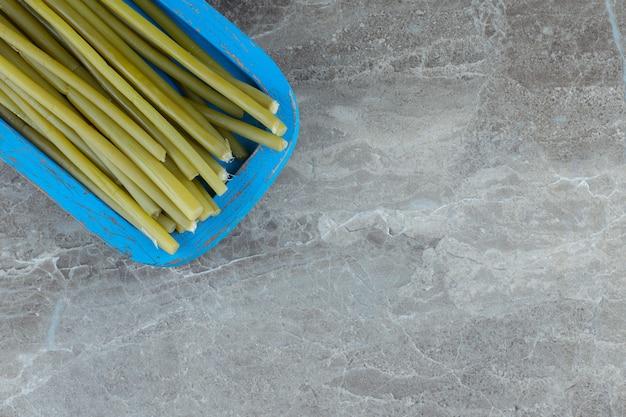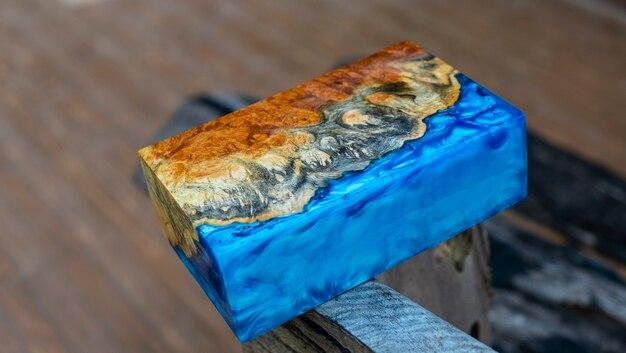As the popularity of epoxy resin continues to grow, so do the questions surrounding its use. One common query that arises is whether epoxy can stick to cured epoxy. It’s a valid concern for those looking to add additional layers or fix imperfections in their epoxy projects.
In this blog post, we will delve into the world of epoxy resin and explore whether it sticks to cured epoxy. We’ll also touch on related topics, such as pouring epoxy over uncured epoxy and applying a second coat of epoxy. By the end, you’ll have a better understanding of how epoxy behaves and the best practices for achieving seamless and durable results.
So, if you’re ready to dive into the sticky world of epoxy resin and learn more about its properties, advantages, and potential limitations, let’s get started!
Will Epoxy Stick To Cured Epoxy
Understanding the Mysteries of Epoxy Bonding
If you’ve ever tried to stick two things together with epoxy, you know it’s a powerful adhesive. But what happens when you need to bond cured epoxy? Can epoxy stick to cured epoxy? Let’s dive into this sticky situation and uncover the secrets of epoxy bonding!
How Does Epoxy Bond Anyway?
To grasp the enigma of epoxy bonding, we must first understand its chemistry. Epoxy is a two-part adhesive, composed of a resin and a hardener, that undergoes a chemical reaction called crosslinking during the curing process. This reaction transforms the liquid epoxy into a solid, creating a strong and durable bond.
The Big Question: Can Epoxy Stick to Cured Epoxy?
Drumroll, please…Yes, epoxy can stick to cured epoxy! Cue applause. Isn’t it amazing how sticky this stuff can be? But, of course, there are a few things to consider before you start gluing everything in sight.
Prep Work is Key
Before attempting to bond cured epoxy, you must ensure proper surface preparation. The bond will only be as good as the surface it’s adhering to, so grab your trusty sandpaper and roughen up the cured epoxy surface. This scuffing allows the fresh epoxy to grip onto the cured epoxy, enhancing the bond strength.
Cleaning, A Dirty Job Worth Doing
Remember, a clean surface is a happy surface. Before applying epoxy to cured epoxy, make sure you thoroughly clean the cured epoxy surface to remove any dust, dirt, or other contaminants. You want the freshest, cleanest bonding experience possible. So scrub away, my friend!
Bonding Beyond Cured
If you’re looking to bond a new layer of epoxy to an existing cured epoxy surface, you’re in luck. Epoxy loves itself. Simply mix up a fresh batch of epoxy, apply it onto the cured epoxy, and voila! The two will bond together like old friends at a reunion.
The Cure Time Conundrum
Here’s a tip: don’t rush the curing process. Allow the fresh epoxy to fully cure before putting any stress on the bond. Depending on the particular epoxy brand and ambient conditions, this could take anywhere from a few hours to several days. Patience is a virtue, especially when it comes to bonding epoxy to cured epoxy.
Should You Sand it Smooth?
Ah, the eternal question. Do you need to sand cured epoxy before bonding? It depends on the desired end result. If you want a seamless, flawless finish, go ahead and sand the cured epoxy until it’s as smooth as a baby’s bottom. But if you’re not too bothered about imperfections, you can skip this step and proceed with bonding directly onto the cured epoxy.
Conclusion
In the magical world of epoxy, cured epoxy can indeed bond to fresh epoxy. With proper surface preparation, cleaning, and good old-fashioned patience, you can make the stickiest of bonds. So go forth, my epoxy enthusiasts, and create wonders with this incredible adhesive! And remember, epoxy truly sticks with you—literally and metaphorically.
FAQ: Will Epoxy Stick To Cured Epoxy
Introduction
Epoxy has become a popular choice for various applications due to its strong adhesive properties and versatility. However, when it comes to using epoxy over cured epoxy, some questions and concerns arise. In this FAQ guide, we will address common queries and shed light on the subject.
Does epoxy stick to clear tape
Clear tape, or any type of tape for that matter, is not the ideal surface for epoxy to adhere to. Epoxy needs a clean, dry, and solid base to bond effectively. So, while tape might be useful for other purposes, it won’t provide the necessary bond for epoxy.
Can you pour epoxy over uncured epoxy
Pouring fresh epoxy over uncured epoxy is generally not recommended. The underlying uncured epoxy may not have fully cured, which can lead to poor adhesion and compromised durability. It’s best to ensure the previous layer of epoxy is fully cured before applying a new one.
Does epoxy resin stick to cured resin
Yes, epoxy resin can stick to cured resin. This makes it possible to apply multiple layers of epoxy resin onto previous cured layers. The key is to prepare the cured surface properly by sanding it lightly to create a rough texture, allowing the fresh resin to adhere securely.
Can you apply a second coat of epoxy
Absolutely! Applying a second coat of epoxy is a common practice to achieve better coverage, deeper gloss, and added protection. However, make sure to follow the manufacturer’s guidelines regarding the recoat window. Sanding the first coat lightly before applying the second one can enhance adhesion.
What are the advantages of epoxy
Epoxy offers numerous advantages, making it a popular choice for various applications. Its exceptional adhesive properties, high strength, durability, chemical resistance, and versatility make it ideal for bonding, coating, and sealing various materials. Moreover, epoxy provides a glossy finish and can be easily colored or textured for creative projects.
Is one coat of epoxy enough
The answer depends on the project and desired outcome. For most applications, one coat of epoxy is enough. However, multiple coats may be needed for a thicker protective layer, increased durability, or to achieve a deeper gloss. Consider the specific requirements of your project before deciding on the number of coats.
Does resin stick to Vaseline
Resin does not adhere well to Vaseline. Vaseline is a petroleum-based product that creates a barrier, preventing proper adhesion. If you’re looking to prevent resin from sticking to a specific area, it’s best to use a mold release agent specifically designed for resin applications.
Should you sand between coats of epoxy
Sanding between coats of epoxy is generally recommended to enhance adhesion and create a smooth surface. Lightly sanding the cured epoxy removes imperfections, bubbles, and any dust or debris that may have settled. It provides a good bonding surface for subsequent coats, ensuring a flawless and professional finish.
How do you get bubbles out of epoxy after it dries
To remove bubbles from dried epoxy, you can use a heat gun or propane torch. Gently moving the heat source over the surface causes the trapped air bubbles to rise and pop. It’s important to maintain a safe distance and keep the heat moving to avoid overheating or scorching the epoxy.
What happens if you add too much hardener to epoxy
Adding too much hardener to epoxy can cause various issues. The epoxy mixture may cure too quickly, resulting in a weaker bond. It can also cause excessive heat buildup, leading to cracking or shrinking of the epoxy. Always follow the manufacturer’s recommended mixing ratios to ensure the best results.
What can I use as a resin mold
The options are endless when it comes to resin molds. You can use silicone molds, plastic containers, glass dishes, or even unconventional items like seashells or ice cube trays. Get creative and experiment with different shapes and materials to bring your resin creations to life.
Why is my resin sticking to my mold
Resin sticking to the mold is a common issue. It can be caused by various factors such as inadequate mold release agent, improper surface preparation, or the use of incompatible materials. Ensure you use a suitable mold release agent and follow proper mold preparation techniques to prevent resin from sticking.
What do you do with uncured epoxy
If you have uncured epoxy, it’s essential to handle it properly. Dispose of any excess epoxy in a responsible manner. To harden uncured epoxy and make it safe for disposal, mix in cat litter or other absorbent materials. Once solidified, you can discard it according to your local waste management guidelines.
How do you make epoxy shiny
To achieve a glossy finish with epoxy, it’s important to apply multiple thin coats rather than one thick coat. Each coat should be properly cured and sanded before applying the next. Once the final coat is cured, you can further enhance the shine by polishing the surface with a fine-grit polishing compound for that stunning, reflective finish.
What will epoxy not stick to
Epoxy generally adheres well to various materials, but it does have limitations. It struggles to bond to surfaces that are extremely smooth, waxy, oily, or contaminated. It’s important to properly clean and prepare the surface before applying epoxy for optimal adhesion. Additionally, some plastics, such as polyethylene and polypropylene, have low surface energy and require special treatment or adhesives for effective bonding.
How do you keep resin from sticking to the mold
To prevent resin from sticking to the mold, you should use a suitable mold release agent. Apply the mold release agent according to the manufacturer’s instructions, making sure to cover the entire mold surface. This creates a barrier between the resin and the mold, ensuring easy release once the resin has cured.
Why is my epoxy rubbery
If your epoxy appears rubbery or has a soft, pliable texture after curing, it may be due to inaccurate measurements or an incorrect resin-to-hardener ratio. Ensure you follow the manufacturer’s recommendations precisely. Additionally, pay attention to temperature and curing time guidelines, as deviations can affect the final hardness and consistency of the epoxy.
Can you put new epoxy over old epoxy
Yes, you can apply fresh epoxy over old cured epoxy. However, proper surface preparation is crucial. Lightly sand the cured epoxy to create a rough texture that allows the new epoxy to adhere effectively. This ensures a strong bond between the layers and enhances the overall durability of the epoxy coating.
Conclusion
Having a solid understanding of how epoxy performs, especially when it comes to sticking to cured epoxy, is essential for successful projects. By addressing these frequently asked questions, we hope to have provided valuable insights and guidance for your epoxy endeavors. Now go forth, armed with knowledge and creativity, and let your epoxy projects shine!

